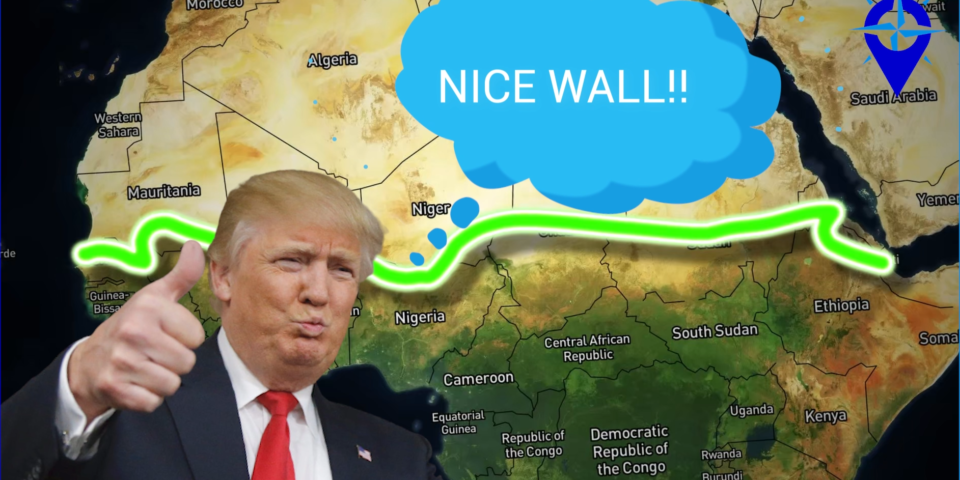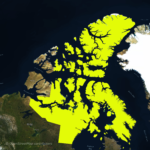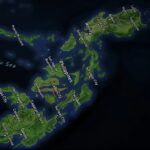Every day on the internet, you’ll come across some hack or DIY to help with your day-to-day activities. But perhaps the most ambitious attempt at a hack is the Great Green Wall of Africa; the wall that seeks to hack the Sahara desert.
Body
The Great Green Wall of Africa is an attempt at stopping the creeping deforestation moving from Northern to Southern Africa. The wall stretches 8,000 kilometres from Senegal in West Africa to Djibouti in the east of Africa. The wall is 15 kilometres wide thus giving it an area of 120,000 square kilometres. With this area,the wall is just larger than the country of Malawi and just smaller than North Korea as the 98th largest country. It would also trump the Great barrier reef to become the largest living structure on the planet.
And speaking of Trump, the Great Green Wall would definitely make the ex-US president jealous. But unlike his wall and other walls we’ve known in history, this wall is not built to keep out immigrants, white walkers (clip of white walkers from Game of Thrones), titans (clip of titans from ‘Attack on Titan’), or the rest of the world (clip of Wakanda). This wall is being built to keep the Sahara desert away.
You see, there are three regions in Africa based on physiography and vegetation. There’s the Sahara region in the North of Africa which is characterized by large sand dunes in the Sahara desert, very low vegetation, and low rainfall as well. Then there’s the Savanna region covering most of Southern Africa and as a sharp contrast to the Sahara region, the Savanna is characterized by rainforests and a high rainfall rate.
There is a method to this climatic madness though. You see, smack in the middle of the Savanna and the Sahara, is the Sahel; a semi-desert region with minimal rainfall and sparse vegetation. So this begs the very important question; “is Africa a hamburger? (comparative picture of the regions and a hamburger)” Anyways, this Sahel is the transitioning of the Savanna into the Sahara. Yeah, you guessed it; the Sahara desert is expanding. The world’s largest hot desert, with around 9.2 million square miles, enough to fit in America and Mexico with space left (clip of America and Mexicos map fitting into the hamburger), and covering over twenty five percent of Africa, is expanding. And it has been growing for quite a while now with scientists reporting that it has been expanding around eight thousand to eleven thousand square kilometres yearly from 1950 to 2015.
In fact, this induced change in climate can be proven by the fact that the Sahara desert was once green. This was discovered by Heinrich Barth in the nineteenth century through cave paintings he saw in Timbuktu. These cave paintings depicted different vegetation, livestock, and therefore, a different way of life, to what he was clearly seeing in the dry land he was currently in. This period dating back 9,000 years ago was called the African Humid Period and signified a period where the Sahara was green.
The implications of this discovery led to the understanding of the fate of the continent if left unchecked (clip describing the desertification of Africa from the North to the South) and the necessity of the wall (picture of the wall as a green line on the African map) like the necessity of lettuce in a burger (picture of a burger with greens).
The Great Green Wall would pass through eleven countries in the Sahel region including Senegal, Mauritania, Mali, Burkina Faso, Niger, Nigeria, Chad, Sudan, Eritrea, Ethiopia, and Djibouti.
The project, spearheaded by the African Union involves the use of trees in a mosaic across the breadth of the continent on the border of the Sahel region.
Trees being used like the Acacia, are mostly drought resistant and are able to hold gallons of water in their roots. In addition to providing moisture, these trees also provide shade for smaller plants and consequently, help with restoring the vegetation of the region around it.
There is proof of this restoration as Ethiopia is said to have rejuvenated around 15 million hectares of land with 5.5 billion seedlings planted. Nigeria and Senegal have also made significant progress as the wall is now according to them 15 percent completed.
There is still a long way to go in building the wall as billions of dollars are required to complete this massive hack. And even Mr. Beast would have to take the seat on this one. But, it would be a bit reductive to say that all the wall does is grow some grass and tell the desert (clip of Gandalf shouting “thou shall not pass”). Because like Heinrich Barth observed, the land that people live in directly reflects the way they live and vice versa.
The Sahara desert is very dry and has recorded some of the hottest temperatures on earth over fifty degrees Celsius. In fact, most of the areas in North Africa are uninhabited. And over the years, as the desert moved South, people moved with it.
This lead to the Sahel, much like the middle of a hamburger, becoming a hotbed for several African tribes (picture of tribes in the Sahel as described at 4:24 in this video and 2:51 in this video) as well as the meeting place for Africa’s two major religions – Islam and Christianity (picture of the religious divide in the Sahel as described at 4:22 in this video). This was compounded even further with the formation of colonies and countries during the period of colonization and decolonization.
As a result the Sahel is one of the most violent regions in the world today.
But, it could get even worse, as more and more migration is occurring in the Sahel region as people search for jobs and a means of livelihood. Meanwhile, this same region is expected to double in size up to 196 million by 2050. And in this same region water bodies serving millions of people are drying up, with the biggest example being Lake Chad which has shrunk down to ten percent of its original size in the past decades.
This is why the Great Green Wall is not only going to help with the growth of vegetation in the Sahel, it is also going to improve the quality of life of its people. This is already happening in countries like Senegal where several villages have seen a growth in job opportunities, as well as reduced migration, while some places have also reported that dry wells have begun to fill up again.
When completed, the wall will accomplish fifteen out of the seventeen Sustainable Development Goals, or SDGs, stipulated by the U.N. including food security, fertile land, health and wellbeing, sustainable energy, poverty alleviation, gender equality, and more.
To put it simply, the Great Green Wall of Africa could be the newest Wonder of the World. With the remarkable progress in land rejuvenation, who knows, maybe we could go from stopping the Sahara to rejuvenating it. And for the first time, a wall would not be built to keep out monsters (clips of the walls from Attack on Titan and Game of Thrones), enemies (clip of the wall from Wakanda), or friends (clip of the Berlin wall); this wall would be the first wall, to join a people together.
THATS THE FUN PART OF THIS STORY that we really should be focusing on because the world needs more trees and green in general to stop the inevitable apocalypse of oncoming suffocation from the privatization of oxygen – you know its happening – just like a water tax – that was something they considered unthinkable in Ireland before it was suddenly introduced it!
But back to the green wall of Africa – yes enormous amounts of trees have been planted and it has been making a difference but focusing mostly on the trees and stopping the Sahara is missing the point – as the Great Green Wall is more complex than just lettuce in a hamburger.
Misconception 1: .
While the Sahara does advance on its own. Due to natural climatic cycles caused by the earth tilting along its axis as it orbits the sun.
Most research has confirmed that its greatly exacerbated by human activity.
In other words the growth of population and the necessity to rare more live-stock is essentially what is causing the desert to expand. So the desert itself is not some evil entity that needs to be stopped but rather a real ecosystem and an important part of our planet balancing the earths climate and contributing to our culture.
Misconception 2:
Desertification cannot simply be halted by planting trees to stop the desert at the outskirts of civilization and those who are managing the initiative in Africa are fully aware of this.
Trees are not the only solution or the way that the wall will be implemented and as such they will likely represent just a part of the Green Wall. The use of water, soil, flora, fauna all need to be considered and implemented where appropriate so its not really going to be a massive wall of trees and due to the massive variability of the climate in the region it really can’t be!
Misconception 3:
That the Sahara is advancing in a straight line all across the African continent -> Desertification is a diffused local phenomena that does not always pose the most severe impact in the regions that border it.
In other words as pointed out in earlier misconception the Sahara is not an evil sea moving down uniformly. In a lot of places there is no spread and in regions with lots of pastoral activity and unchecked agriculture there is.
Misconception 4
That the Great green wall will be planted in sparsely populated areas far away from the main cities and hubs.
In fact: the proposed trajectory is to pass through inhabited regions where agriculture and livestock farming are already fully developed.
Misconception 5
The Green Wall of Africa is the first ever major attempt at halting desertification.
In fact China and Algeria have had their own major infinitives that long pre-date Africa.
In 1978, Chinese authorities — launched a large‐scale management programme over a wast area of over 4 000 km long and almost 1 000 km wide.
A simple mistake to make once again is to assume that this green line was meant to stop the Gobi desert – this was not the main goal of the Chinese authorities who were most mindful of the fact that desertification is linked to vegetation and soil degradation.
In 1989, President Deng Xiaoping named the ‘Great Green Wall’ programme by referencing it to the ancient Great Wall of China, to underline the scope of the work, comparable to the construction of the wonder.
The aim was to sidestep the adverse effects of land degradation that was causing dust storms in Chinese Cities and The government had planned for annual expenditures of 60 billion yuan (USD 8.77billion) for the tree planting campaigns.
The aim of this large‐scale programme was to ensure that 20% of the
overall area would be under forest cover by 2010.
There were however many problems encountered in the field, the biggest of which was that many of the species of trees that they were trying to introduce could do not survive – they learned that variables in climate soil and relief needed to be taken into account.
Since it wasn’t it lead to high tree mortality rate. So the scientists stressed the importance of using local species adapted to the local climates rather than forcing trees which had little chance of long term survival.
Algerian green Barrier
Since the 1970s, Algeria has been involved in a national so‐called ‘Green Barrier’ intended to halt desertification along the edge of Northern Sahara.
Initially, it was a civil engineering pine reforestation programme carried out by the army on an arid and a massive pastoral belt.
The results were however bellow expectation. with a planting success rate of only 42%. In a 20 year long project.
The project was abandoned in the early 1990’s but was relaunched in 1995 with a new strategy in favor of mixed vegetation and crops that would help contribute to the income of the local residents.
So knowing these facts The Great Green Wall of Africa was not designed as a wall of trees crossing the Sahara, but rather as a set of multisectoral initiatives and interventions to ensure natural resource conservation and protection with the aim to fighting poverty.
So no, stopping the desert is a lot more complicated than just planting a bunch of trees and Africa isn’t as simple as a hamburger.
and it is perhaps for this reason that it is so time consuming and challenging a task as local governments need to act and implement policies that preserve the soil.
Its impossible to just go out there overnight plant millions of trees and expect them to miraculously grow and stop desertification as has already been proven by the Chinese and Algerians.
Available studies and research confirm the need to develop an approach that integrates agricultural and pastoral activities, with the aim of preserving the environment and promoting sustainable land development, and combining different forms of reforestation.
So the Great Green Wall probably isn’t going to be some great wonder – a magnificent wall of trees imposing on the desert as mentioned earlier but if it is implemented it could change the lives of millions of residents of the Sahel.
And it could prevent the current migration crisis – as people will no longer be looking to escape the region if their livelihoods were not threatened.
The necessity of the green wall and major investment into the Sahel becomes most apparent when considering the political stability of the region and its rapidly expanding population.
Now, if you would like to support the growth of this channel please watch another one of my videos next – how about understanding the conflict in Somalia? It has a super friendly comment section!



